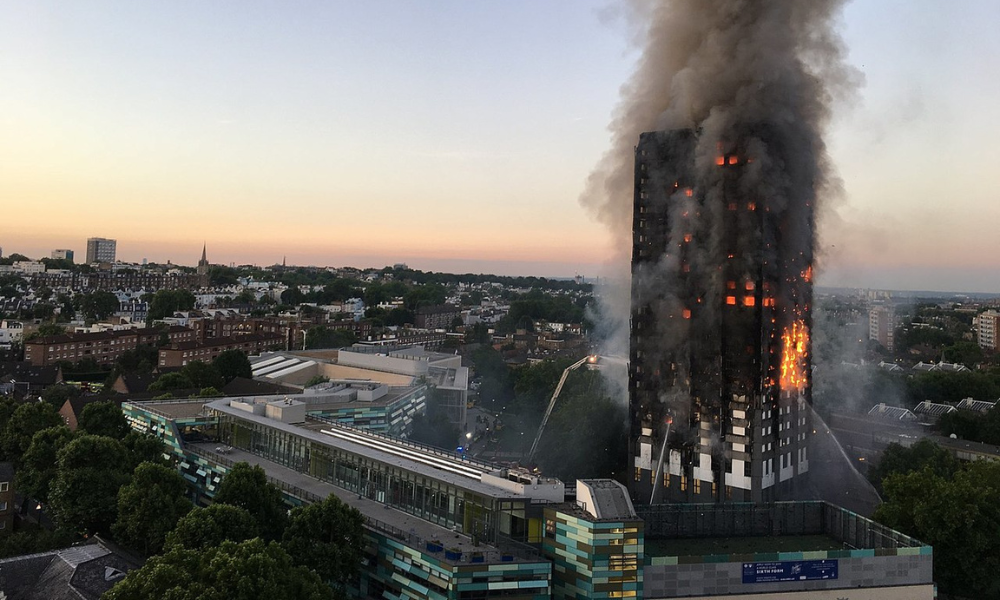Panel to hear closing statements in November prior to writing conclusive report

The Grenfell Tower Inquiry ended last week with a sobering reminder of the lives that were lost in the tragedy, including harrowing accounts of the victims’ last moments.
Seventy-two people, including 18 children, died in the fire that broke out in the 24-storey residential tower block on June 14, 2017.
Costing £150 million so far, the four-year inquiry sat for more than 300 days, poring over more than 300,000 documents and hearing more than 1,500 witness statements, although there will not be a final report into the causes of the disaster until 2023 at the earliest.
Before then, the inquiry panel will hear final closing statements from the main participants on the week of November 7.
Last week, the inquiry heard evidence about the immediate circumstances surrounding the deaths of the victims.
Read more: ‘Catastrophic’ cladding fire test results revealed during inquiry
Forensic experts concluded that most died from the “inhalation of fire fumes” caused by combustible cladding, or ACM (aluminium composite material), that was made by companies that knew of the dangers of using such materials.
The majority of the victims died huddled together in the highest floors, either in the stairwell or in their flats. One person, Rania Ibrahim, 31, broadcast a live video on Facebook showing how thick smoke filled the hallway outside her apartment on the 23rd floor and prevented her and her family from escaping.
Some, like Abufras Mohamed Ibrahim, 39, and Mohammed Neda, 57, decided to jump to their deaths trying to escape the flames – the latter from his top-floor flat, where he had reportedly chosen to stay with a group of women until the last moments.
Some who tried to escape in a lift, like 24-year-old Khadija Saye, died when it stopped suddenly on the 10th floor. It is understood the doors opened for 25 seconds, during which time the lift filled with thick, acrid smoke.
Firemen had earlier tried but failed to activate an override switch which would have placed the lift in their sole control and prevented residents from using it unaided.
Victims who contacted the emergency services were advised to stay put and remain in their flats.
Up to 15 of the residents who died were disabled and had been living in the top floor flats, despite having informed the council about their immobility and the need to reside in the lower floors.
Read more: Industry to pay for unsafe cladding issues
Inquiry chair Sir Martin Moore-Bick said “many mistakes were made” that led to the tragedy, adding that organisations “failed in one way or another to meet the standards expected of them”.
They included both private and public sector bodies, he said, as well as the fire brigade.
He said that the wider causes of the fire “have their roots in the culture of the construction industry and the regulatory regime which applies to building work, among other things”.
He added: “Many decisions taken by many different people over the course of many years conspired to create a building which, in June 2017, was vulnerable to a catastrophic fire resulting from the failure of a common type of domestic appliance.”
During this year’s inquiry, it emerged that cladding similar to the one used in the ill-fated tower failed spectacularly in a safety test 16 years before the tragedy.
In one of the tests, cladding made of ACM which was later used on the Grenfell tower burst into 20-metre-high flames in just five minutes.
Under normal conditions the fire would have been allowed to continue for 30 minutes but had to be stopped due to the ferocity of the flames.
Moore-Bick could not disclose when the inquiry would produce the written report, saying it would do so “as quickly as possible”, although he warned that it would be a lengthy process.
Earlier this year, the government threatened to block from the housing market developers and manufacturers who refused to help fix cladding issues.
In February, the former secretary of state for housing, Michael Gove, also said that people who owned multiple properties would not be protected under law from future costs of remediating unsafe cladding, prompting an angry response from certain sectors of the property industry.
The Crown Prosecution Service (CPS) could begin criminal proceedings after the report is published, but it is understood that it could take months to decide whether to go ahead.



